February: Feb. 12 | Feb. 13 | Feb. 23
March: March 18 | March 28 | March 29
April: April 3 | April 4 | April 5 | April 8 | April 16
E
B
R
U
A
R
Y
Gallery - Click for more photos

The strike begins, with 930 of 1,100 sanitation workers and 214 of 230 sewer and drainage workers not showing up for work. Their acions were prompted by the deaths of sanitation workers Echol Cole and Robert Walker Feb. 1, 1968. Both had climbed into the back of a garbage truck to get out of the rain when they were crushed by a hydraulic ram that started up on its own.
Officials from the American Federation of State County and Municipal Employees (AFSCME) come to Tennessee to lead negotiations with the newly elected Mayor Henry Loeb. The mayor declares the strike illegal and refuses to negotiate.
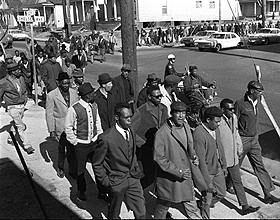
Video - Mayor Loeb on the strike
Police, brandishing rifles, use their vehicles to force marchers back toward the sidewalk. Strikers say a police car ran over the foot of a woman. The men react by turning the car over on its side. The strike explodes into violence. Marchers are beaten with nightsticks or sprayed with Mace.
Gallery - Click for more photos
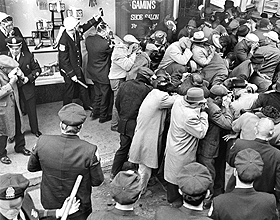
Video - Violence erupts
A
R
C
H
Dr. Martin Luther King Jr. arrives in Memphis and gives a speech to thousands in Mason Temple Church. In the speech, he suggests they should mobilize a work stoppage.
Gallery - Click for more photos
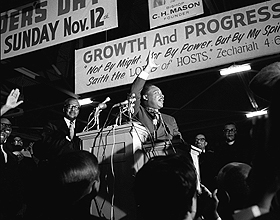
Video - King joins the struggle
The march begins with King and his ministerial allies in the lead, flanked by sanitation workers. But it turns violent when members of the Invaders began to break storefront windows and looters take advantage of the situation. Fearful for King's safety, his men sweep him away. Police disperse the marchers with teargas. National Guard troops are called in and seal off black neighborhoods. Martial law is declared by nightfall. More than 60 were injured and one person was killed.
Gallery - Click for more photos

Video - National Guard called in
The National Guard patrol the city in armored personnel carriers equipped with 50-caliber machine guns.
Gallery - Click for more photos
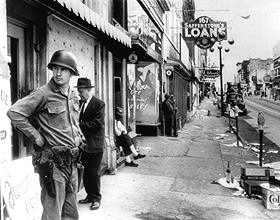
Video - King holds a press conference
P
R
I
L
King returns to Memphis and gives his last public speech at Mason Temple Church.
Gallery - Click for more photos
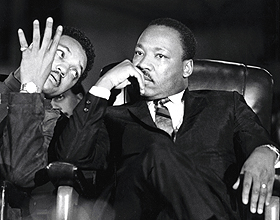
Video - King's final speech
Gallery - Click for more photos

Standing on the balcony of the Lorraine Motel at 6:01 p.m., King is shot to death by a sniper. The bullet came from James Earl Ray, who shot the fatal bullet from a rooming house 207 feet away. He was later caught and pled guilty, receiving a 99 year sentence.
Gallery - Click for more photos
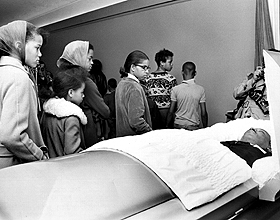
Mourners pay tribute to King at R.S. Lewis & Sons Funeral Home. His body is later transported to Memphis Metropolitan Airport where his family awaits to take him home to Atlanta.
Gallery - Click for more photos
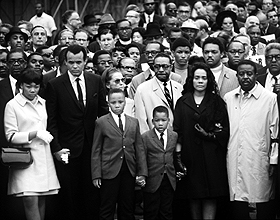
King's widow, Coretta Scott King, leads a memorial march in downtown Memphis. Civil rights and union leaders are among the estimated 19,000 people in attendance.
Video - End of the strike
The strike is settled. The city recognizes the union and the workers get a raise of 10 cents an hour, with another nickel an hour hike to take effect in September. The city agrees to make promotions on the basis of seniority and competence - not race. The workers also win the right to have union dues automatically deducted from their paychecks.






